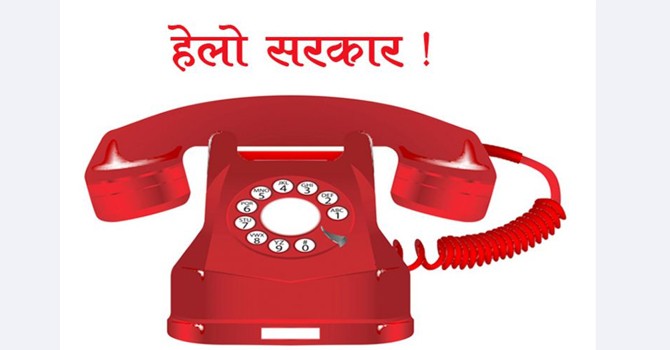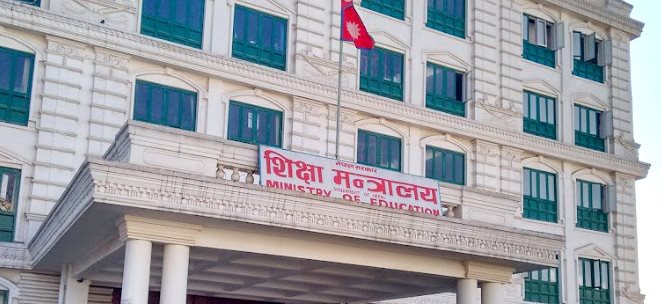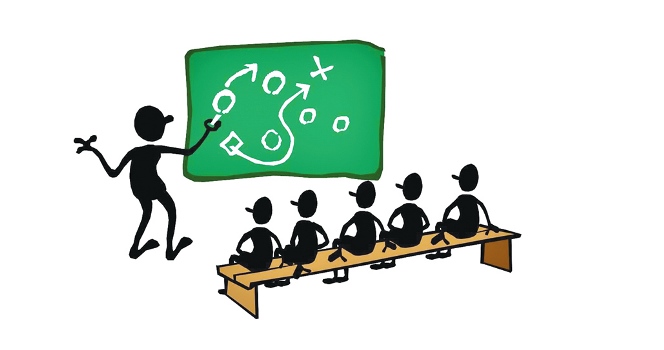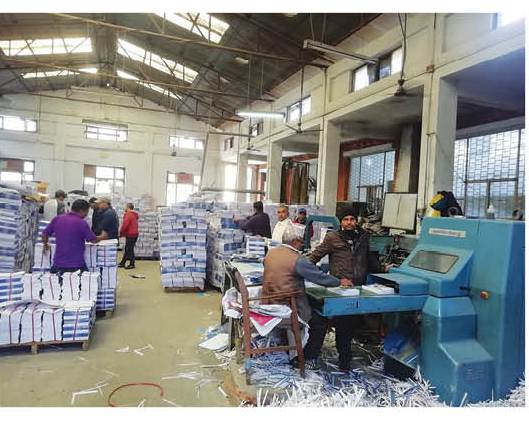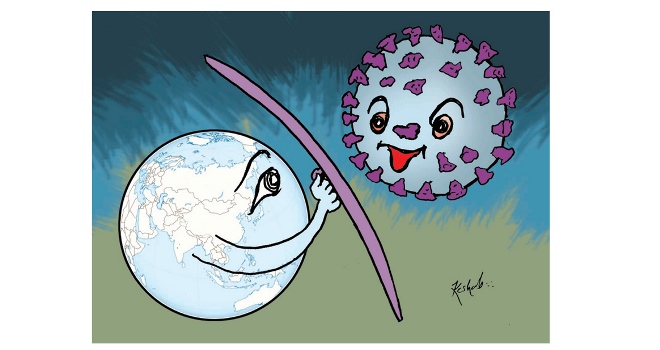Integrating Technology Into Education
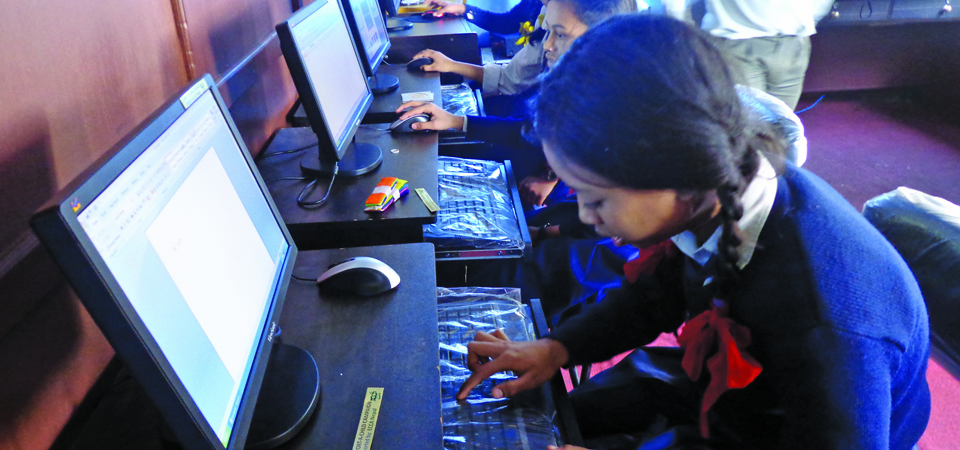
Manjima Dhakal
The education sector in Nepal has made some significant achievements in recent years. The government has introduced new plans and policies to integrate latest technology into teaching-learning process to modernise the entire education system. Likewise, the higher education sector, which was affected owing to the absence of officials since long, has started devising and enforcing policies. The pace of reform in the sector has been slowed down as the global COVID-19 pandemic hit the country hard. But now this disruption seems temporary and is unlikely hinder the long-term education goal.
Plans and policies
The incumbent government has implemented National Education Policy 2076 and National Science Technology and Innovation Policy 2076. For the first time, the National Education Policy 2076 has included higher education in its policy with the objective of making education at all levels competitive, technology-friendly, employment-oriented and productive. It focuses on creating educated, efficient and capable human resources as per the country’s need. The policy provides a clear education roadmap to enable the country to attain social justice system and prosperity. Accordingly, required rules and regulations are being formulated.
In addition, with the implementation of the National Science, Technology and Innovation Policy 2076, the government has contemplated paying necessary attention towards science and technology, and innovation for achieving sustainable development. The policy will help build a prosperous Nepal by improving the quality of citizens’ life through increasing production and productivity. It focuses on the development of science and technology, use of innovation and promotion of scientific culture.
The government has established Madan Bhandari Technology University and Yogmaya Ayurveda University for producing higher-level technical human resources. The formulation of necessary policies and building infrastructures for these universities are going on. Madan Bhandari Technological University is being set up with an objective of boosting the technical field while Yogmaya Ayurveda University will concentrate on promoting Ayurveda and Yoga through higher education.
The universities are autonomous bodies. However, in line with existing laws, the government nominates and appoints officials to run these varsities in a smooth manner. Several universities were unable to function well for a long time in the absence of officials. At present, some universities, including Tribhuvan University, are focusing on improving educational activities by resolving policy-related issues. The nation’s oldest university has given a permanent status to many teachers working in its various constituent campuses through merit-based appointment. The varsity is also taking initiative to solve the problems of other temporary teachers. Besides, it is working in the field of curriculum development.
Ending longstanding disputes, the government recently appointed the new Vice Chancellor at the Kathmandu University. Likewise, Pokhara University, Purbanchal University, Agriculture and Forestry University and other universities have also got new office-bearers. The government has formed the Medical Education Commission and nominated office-bearers. The authority has recently conducted an integrated examination of various medical science entrance exams such as dentistry and pharmacy. Besides, the commission aims to establish medical colleges across the country on a scientific basis. Thus, the government has done a lot in the field of medical education, too.
Federalism has been instrumental in boosting school education, which is now within the ambit of local levels as per the constitution. Education officers have been appointed at every local level. This has made it easier to resolve the pertinent education problems. Now, many schools have adopted curricula developed by the local governments. Much has been done to improve the school education. Earlier, classes were divided into primary, lower secondary, secondary and higher secondary levels. But now school-level classes are divided into basic and secondary levels. The Grades ranging from 1 to 8 is grouped as the basic level and 9 to 12 as the secondary level. Children have started studying the new curricula that include federal structures and new maps.
As per the government’s goal of linking school education with technology, the computer education has been included as a compulsory subject from Grade 6. In addition, the Teachers Service Commission has recruited more than 12,000 permanent teachers to tackle the technology-related problems in the school education and overcome the dearth of subject teachers. As the new teachers are technology-friendly, they are expected to meet the government’s goal of linking school education with technology.
Aiming to extend technology education to every village, the government has planned to conduct technical stream classes from Grade 9 to 12 at least one in all local levels. Under this, technical education has reached more than 600 local levels out of 753 across the country. Technical education classes on agriculture, engineering and others will help minimise shortage of technical manpower. Realising the need for maximising the use of technology and internet in the times of the COVID-19 pandemic, the government has set a target of providing internet to every secondary school.
Inclusive education
The government has made various special arrangements for the equal participation of the students of all classes, castes, areas and communities in school education. In order to reduce the absenteeism and inconvenience of female students, the local governments have started distributing free sanitary pads to all female students since the last academic session.
Likewise, the student day-meal programme, which was implemented only in some districts and regions in the past, is now available to all children up to grade 5 in community schools. Similarly, special arrangements have been made for children with disabilities and also for maternal language education. Efforts have also been made to reduce the dropout rate of children.
Notwithstanding some good initiatives undertaken to improve the education sector, some vital achievements are yet to be made. The education sector has been badly affected by the coronavirus outbreak. The government has failed to address the pandemic’s impact on this highly important sector. The government still remains undecided about the academic year and introducing examination methods. For the government, it is essential to bridge the quality gap between the private and community schools.
(Dhakal is a TRN journalist.)
Recent News

Do not make expressions casting dout on election: EC
14 Apr, 2022
CM Bhatta says may New Year 2079 BS inspire positive thinking
14 Apr, 2022
Three new cases, 44 recoveries in 24 hours
14 Apr, 2022
689 climbers of 84 teams so far acquire permits for climbing various peaks this spring season
14 Apr, 2022
How the rising cost of living crisis is impacting Nepal
14 Apr, 2022
US military confirms an interstellar meteor collided with Earth
14 Apr, 2022
Valneva Covid vaccine approved for use in UK
14 Apr, 2022
Chair Prachanda highlights need of unity among Maoist, Communist forces
14 Apr, 2022
Ranbir Kapoor and Alia Bhatt: Bollywood toasts star couple on wedding
14 Apr, 2022
President Bhandari confers decorations (Photo Feature)
14 Apr, 2022


